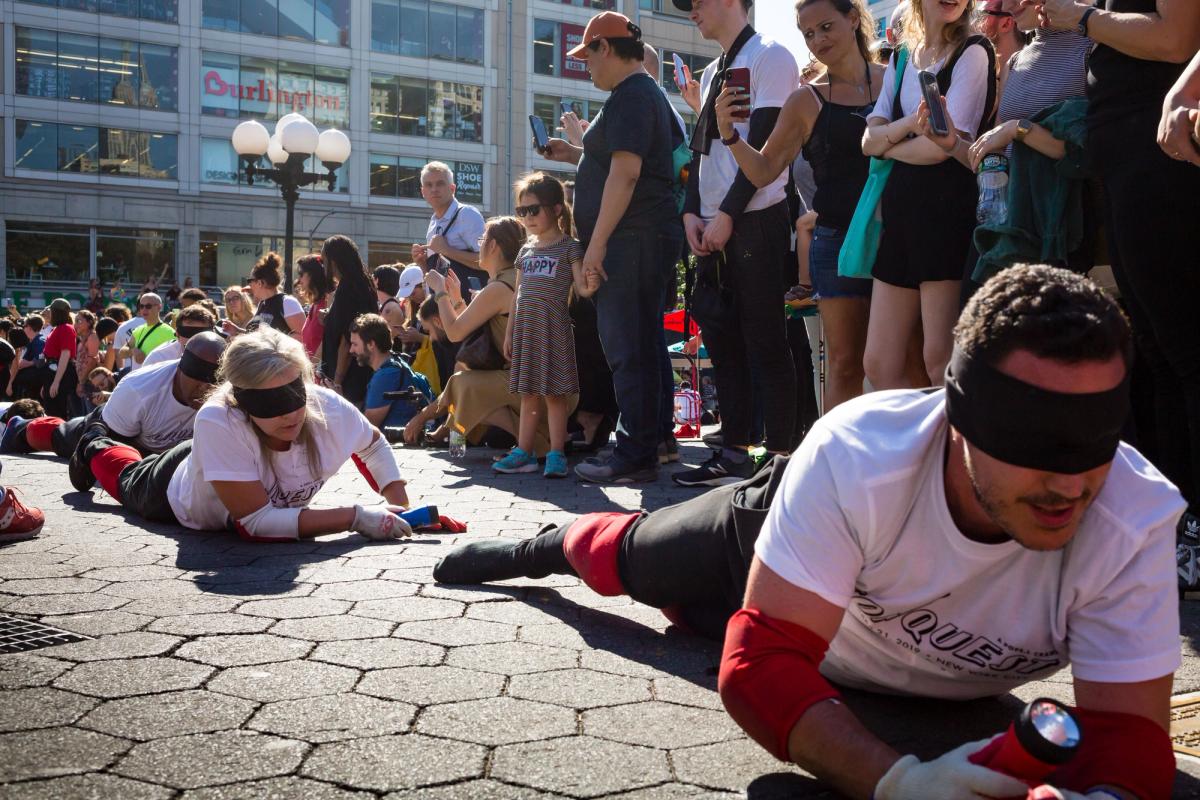I lowered my blindfold and got on my hands and knees. Walkie talkies beeped and clipboards clacked. “We’ll be right here if you need anything,” a staffer assured me, stowing my belongings in a rolling cart. “We want to make sure you are safe and comfortable.” I did feel relatively comfortable, considering I was about to crawl along a New York City sidewalk—blindfolded, holding a flashlight, and wearing only one shoe.
I was one of more than 100 volunteers participating in Conquest, Pope.L’s largest group performance to date, which took place in New York’s Greenwich Village this weekend. The artist has been staging such solo and group performances since the late 1970s, most memorably in The Great White Way, 22 Miles, 5 years, 1 Street (2000-2009), when he crawled all the way up Broadway from Battery Park to the Bronx wearing a Superman costume. Pope.L has said that he started his crawls after seeing so many people living on the street, and imagining: “What if all these people en masse began to move as one? But at the time I could only convince one person to do it and that was myself.”
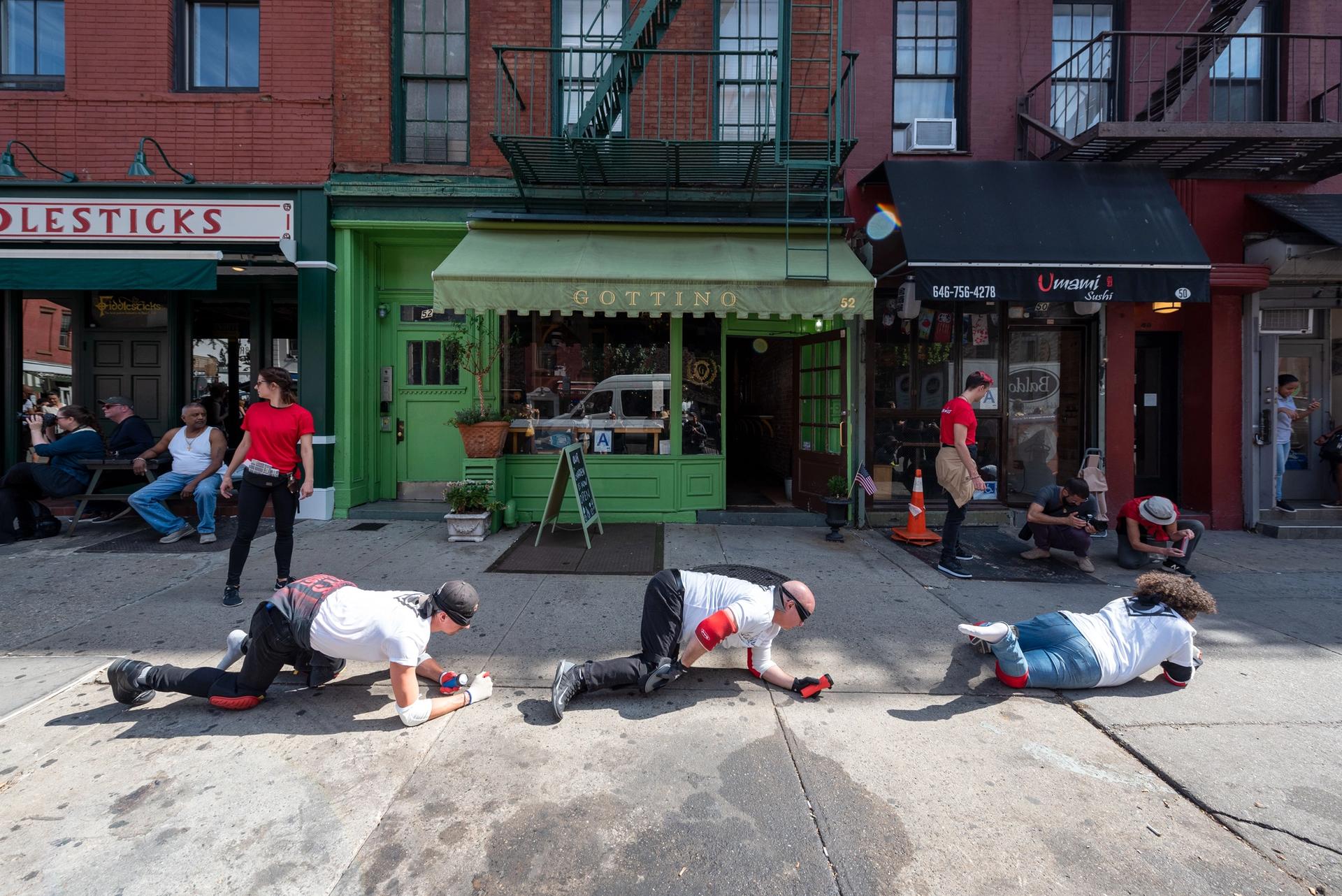
Pope.L, Conquest (2019), a group crawl in New York featuring 140 participants, 5-hour duration, commissioned by Public Art Fund © Pope.L Photo by Timothy Schenck, courtesy of the artist and Public Art Fund, NY
On Saturday, 21 September, volunteers gathered to don commemorative t-shirts emblazoned with a Superman-style letter “C” along with sporty red knee- and elbow-pads, provided by the work’s commissioner, the Public Art Fund. Other co-signers of the project included the Whitney Museum, the MoMA, and Mitchell-Innes & Nash who will each host solo exhibitions of Pope.L’s work this fall. New York City Mayor Bill De Blasio’s office, the NYPD, the Parks Department, and Community Boards 2 and 5 also granted their approval. So this 2019 crawl is less transgressive in the sense of unsanctioned than some of Pope.L’s past works, but his audience is bigger than ever before.
“It took 40 years to get here,”Pope.L remarked before the relay started, to a crowd of around 200 spectators gathered at Seravalli Playground on Horatio Street, near the Whitney Museum. “It’s embarrassing but cool. I’ll take the embarrassment if we can get together to do this.”
Nicholas Baume, the Public Art Fund’s chief curator and director, noted in his opening remarks that New York in the 1970s was very different from today: the city was bankrupt and homelessness was rampant, implying these are issues of the past. But according to the Coalition for the Homeless, the city’s homeless population has reached the highest levels since the 1930s. As I listened, I entered a momentary conspiracy daydream about municipal finances, with public-private partnerships encompassing everything from this very event to supposed solutions for homelessness itself.
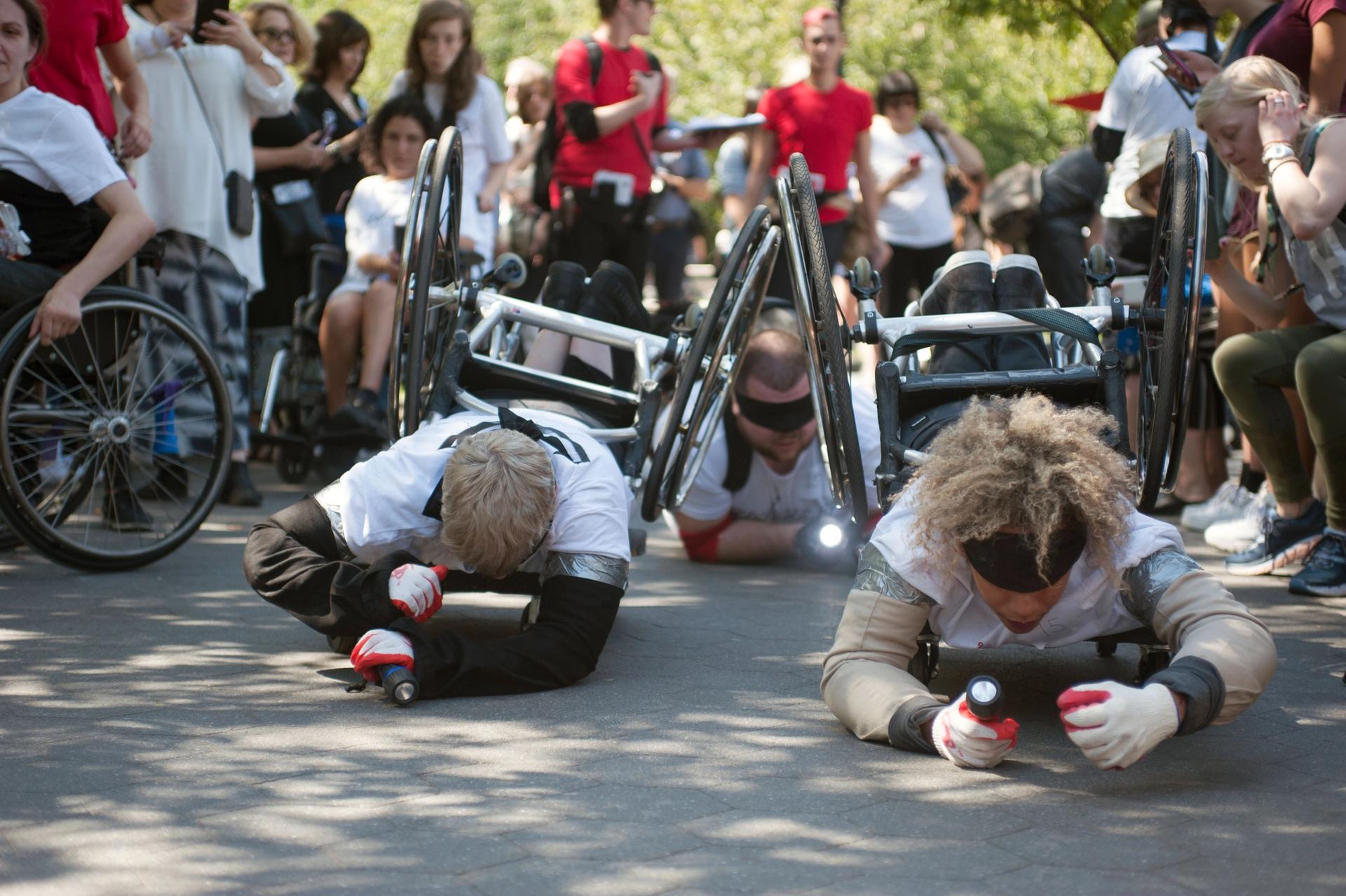
Pope.L, Conquest (2019), a group crawl in New York featuring 140 participants, 5-hour duration, commissioned by Public Art Fund © Pope.L Photo by Amy Elliott, courtesy of the artist and Public Art Fund, NY
Baume continued: “the work asks us to identify and identify with homeless people”. He also acknowledged the irony of this route, which snaked through “a very rich area” of the West Village. And indeed, the neighbourhood was almost eerily clean. Although 60,000 climate marchers had flooded the streets nearby only 24 hours ago, the UN delegation was soon to arrive in the city, and the curbs had been buffed to a shine.
With my head raised just a few inches above the pavement, I entertained the idea that this is how I would live the rest of my life.
Dozens of cameras encircled the crawlers as they got moving, already sweating in the hot sun. One woman crawled with an infant strapped to her chest. A taxi driver honked. A mailman abandoned his cart in the road to ask what was happening. Pope. L himself looked like a casual bystander, with a deli coffee and a backpack slung over one shoulder.
As we passed the Aids memorial in Greenwich Avenue, a group of off-duty delivery guys on park benches shook their heads, smiling at the absurdity of the spectacle. Moving toward Sixth Avenue, we interrupted serene brunchers catching rays at their outdoor tables. Line cooks peered up from the trapdoor of a subterranean kitchen. “And that’s the art?” a dog walker sneered. “What are the flashlights for?” a concerned man asked me. Another crawler with me pointed out the deeply confused expression of a young boy, whose worldview seemed to be exploding in front of him.
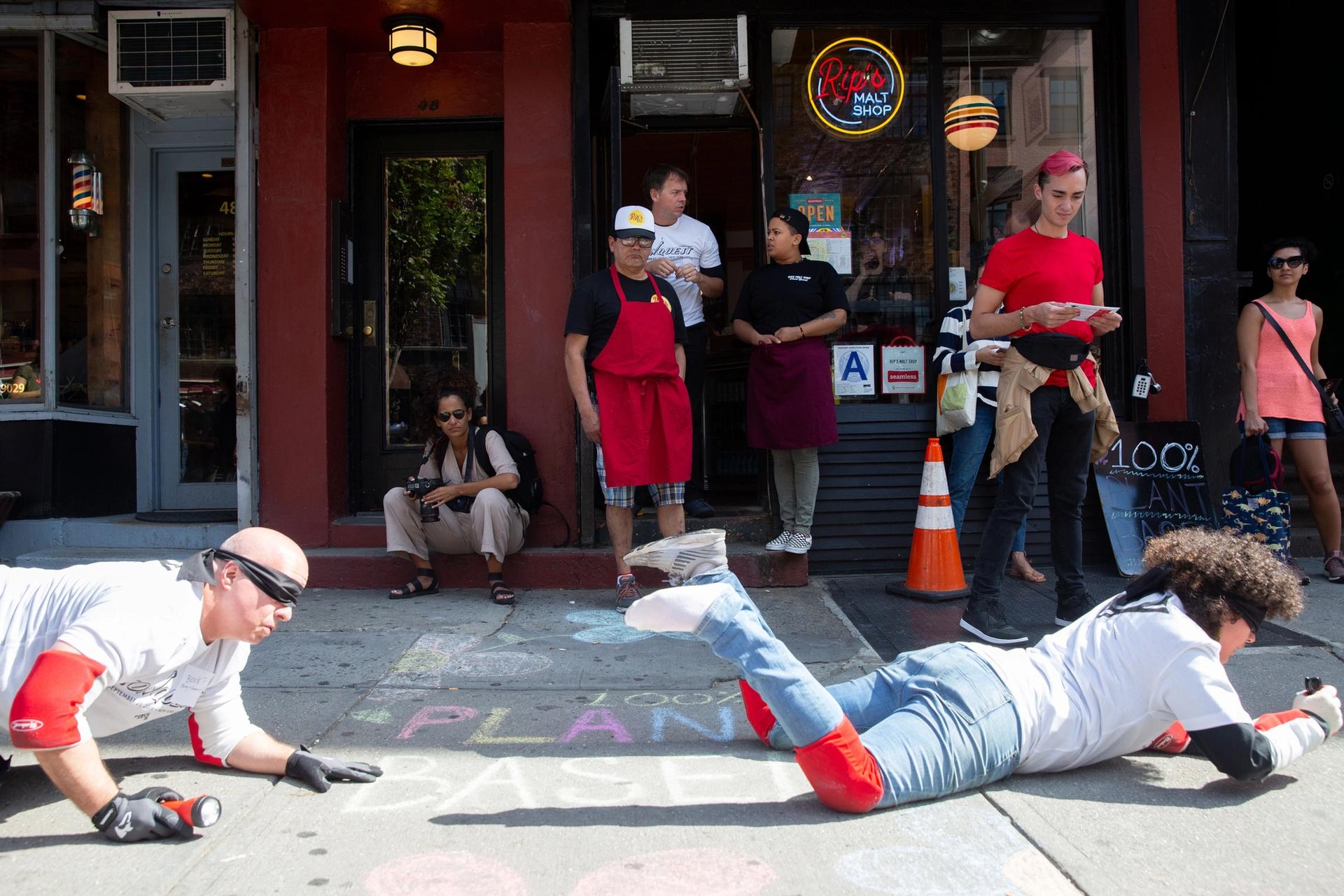
Pope.L, Conquest (2019), a group crawl in New York featuring 140 participants, 5-hour duration, commissioned by Public Art Fund © Pope.L Photo by Claudio Papapietro, courtesy of the artist and Public Art Fund, NY
Blindfolded, I made small talk with my group of fellow volunteers as we awaited our signal. “I’m a lawyer,” a woman near me said. As we took off, I crawled next to an older woman who pulled herself along using only her arms, seeming to be in genuine pain. We catch whiffs of dog shit and grilling meats. Even under the blindfold, I could feel eyes on me, watching without interfering. With my head raised just a few inches above the pavement, I entertained the idea that this is how I would live the rest of my life.
But after only a few minutes, we reached the end of the block. Jubilation surrounded us as we regained our natural height. The gesture of so temporarily assuming an abject form felt flippant. A New York crowd usually treats a prone body fearfully, quietly, with long glances. But the crowd for the performance applauded us, as our shoes were ceremoniously returned. Real suffering was not depicted on that day, nor could it be.
Conquest was both silly and unsettling, completely theatrical and real. “That was the weakest I’ve felt in a long time,” one woman said, short of breath, pulling off her blindfold. We are lucky to have Pope.L as this season’s headliner of the Whitney and the MoMA, because his work thrives in the maddening swirl of contradictions that is our reality. Pay attention, he is passing the baton.
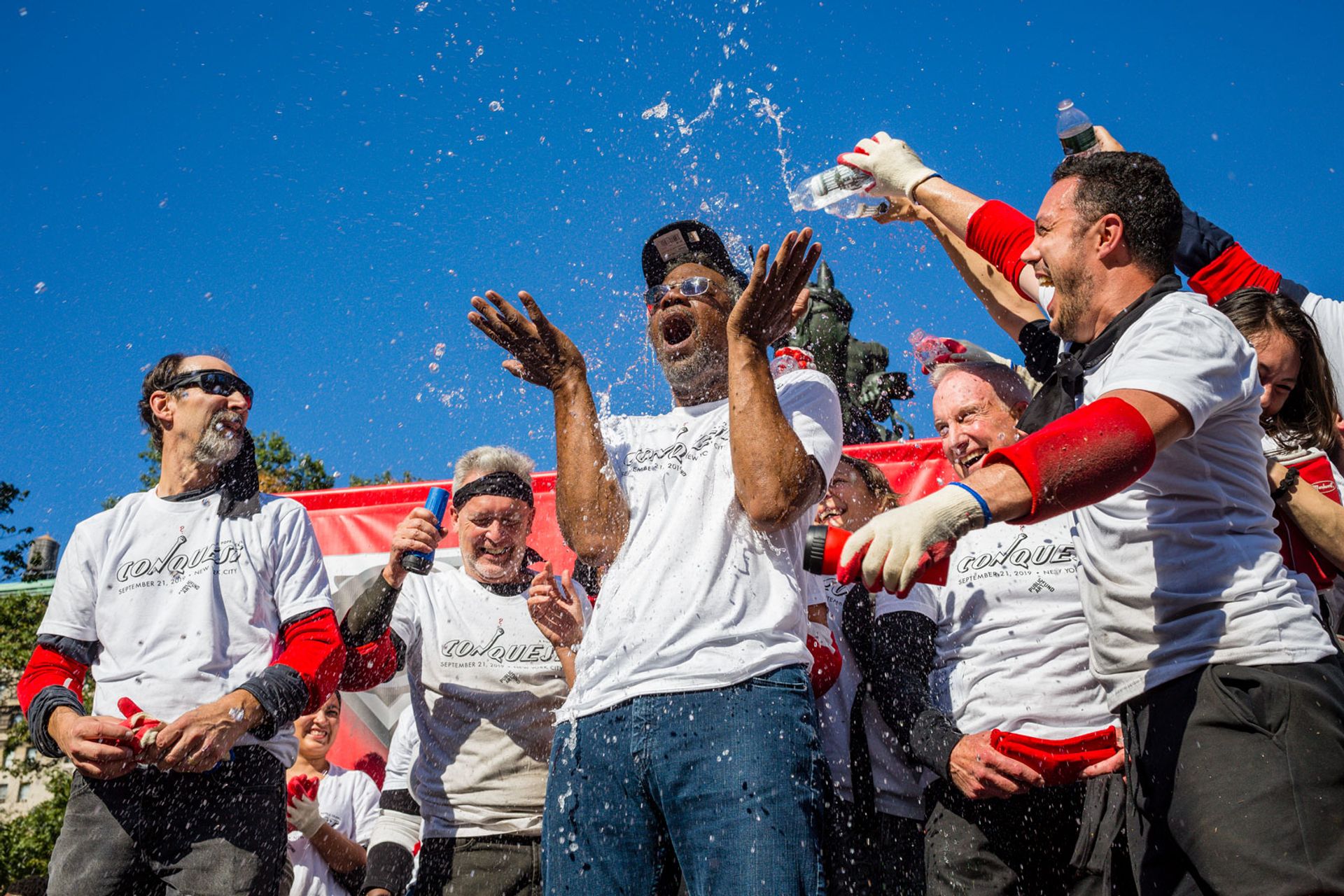
Pope.L, Conquest (2019), a group crawl in New York featuring 140 participants, 5-hour duration, commissioned by Public Art Fund © Pope.L Photo by Nicholas Knight, courtesy of the artist and Public Art Fund, NY


